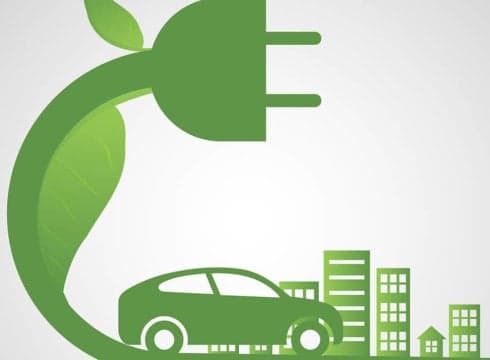State Transport Offices Will Have A Certain Percentage Of Public Electric Vehicles: Niti Aayog
Inc42 Daily Brief
Stay Ahead With Daily News & Analysis on India’s Tech & Startup Economy
Government think-tank Niti Aayog is exploring ways to make legislatures reduce the carbon footprints of their respective states. It plans to provide instructions to states with a target to reduce the carbon emission through electric vehicles that can be used by masses such as Electric Buses.
Niti Aayog’s official spokesperson said that the move will ensure that new orders for public utility vehicles by state transport offices will have a certain percentage of electric vehicles as well.
The report cited the spokesperson, as stating, “…for the country to successfully change to electric vehicles a behavioural change from the consumer, not EV policy, is what is necessary.”
Niti Aayog believes that the move will auger well to continue the momentum of implementing electric vehicles across the country. Faster Adoption of Manufacturing of (Hybrid &) Electric Vehicles (FAME) scheme has a corpus of $116 Mn (INR 800 Cr) allocated for a period of two years that ends in 2019.
States such as Karnataka, Maharashtra, Uttar Pradesh, Andhra Pradesh, and Goa have already started showing commitment to replacing diesel- and petrol-fuelled vehicles with electric vehicles. Meanwhile, Telangana has become the fourth state to have its own electric vehicles policy.
As part of the FAME scheme, state transport corporations –including Mumbai, Hyderabad, Manali, Kolkata and Bengaluru, Mumbai, Hyderabad, Manali, Kolkata and Bangalore –have already introduced electric vehicles into their fleet.
At present, there are about 1.5 Lakh electric vehicles on Indian roads, with the segment projected to grow to 5% of all vehicles on the road by 2023, compared to 2017-18 where EVs accounted for less than 1% of all cars sold.
If India successfully shifts to shared, electric and connected mobility, it could potentially help India save up to $300 Bn (INR 20 Lakh Cr) in oil imports and nearly 1 gigatonne of carbon dioxide emissions by 2030.
India plans to roll-out 30% (earlier 100%) EVs in its effort to reduce carbon footprint by 33% to 35% from its 2005 levels by 2030. The move is in line with its commitments to the United Nations Framework Convention on Climate Change adopted by 195 countries in Paris in 2015.
However, there are many other factors contributing to the increase in the carbon emission in the country. For instance, stubble burning practiced mainly in the states like Haryana, Uttar Pradesh and Punjab
The recently published study, ‘The Journal of Geophysical Research- Atmospheres’ conducted before, during and after the crop residue burning (CRB) season, has revealed that the pollution caused by stubble burning has begun to show far-reaching impact, spreading black carbon via prevailing wind to Maharashtra, Madhya Pradesh, Telangana, Chhattisgarh, Odisha and West Bengal.
Crop residue burning spews black carbon and greenhouse gases into the atmosphere, which results in higher temperatures in the areas and will have adverse health effects. The report highlights that there was 40-60% jump in black carbon concentration over parts of central and southern India.
Government’s own study has highlighted 17.5% increase in deaths and severe illnesses such as non-communicable diseases, chronic respiratory diseases and lower respiratory infections — caused by air pollution in 2017.
India is among the most vulnerable countries to climate change and is the world’s largest emitter of greenhouse gases after the US and China. In such a scenario, it certainly becomes imperative for a country with 1.3 Bn population to fast pace the EV adoption in the country.
[The development was reported by The Financial Express]
{{#name}}{{name}}{{/name}}{{^name}}-{{/name}}
{{#description}}{{description}}...{{/description}}{{^description}}-{{/description}}
Note: We at Inc42 take our ethics very seriously. More information about it can be found here.


